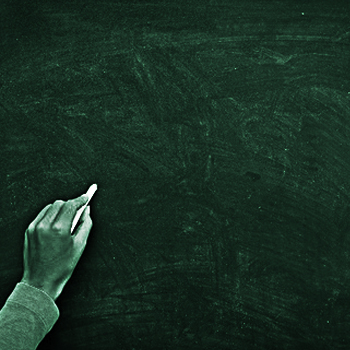 Mystics have been very creative in teaching Simple Reality.
Mystics have been very creative in teaching Simple Reality.
“Like the other teachers of his time, Buddha taught through conversation, lectures, and parables. Since it never occurred to him, any more than to Socrates or Christ, to put his doctrine into writing, he summarized it in sutras (“threads”) designed to prompt the memory … His discourses took the form of Socratic questioning, moral parables, courteous controversy, or succinct formulas whereby he sought to compress his teaching into convenient brevity and order.” Buddha understood that Simple Reality is indeed simple.
Like all great teachers, Buddha also added humor to simplicity to reach even the most resistant student. “Like Lao-tzu and Christ he wished to return good for evil, love for hate; and he remained silent under misunderstanding and abuse. ‘If a man foolishly does me wrong, I will return to him the protection of my ungrudging love; the more evil comes from him, the more good shall come from me.’ When a simpleton abused him, Buddha listened in silence; but when the man had finished, Buddha asked him: ‘Son, if a man declined to accept a present made to him, to whom would it belong?’ The man answered: ‘To him who offered it.’ ‘My son,’ said Buddha, ‘I decline to accept your abuse, and request you to keep it for yourself.’”
As mystics (we are a mystic any time we experience the present moment) we have the opportunity to become creative teachers by passing along the principles of Simple Reality. For example, as perfect creations within a perfect Creation, we surely regard the notion of sin as absurd. It is indeed nonsensical as is this easy-to-remember acronym suggests.
S I N = Self-Imposed Nonsense
The principles of P-A are few in number, simple of course, but also formulaic, that is, they can be expressed in algebraic terms. For example, the formula S+S+S = S. This formula relates to the need to have a foundation or context that supports transcendence, insight or “the shift.” Without Simplicity, Silence, or Solitude, we will find it hard to experience Serenity. In other words, response will be difficult and we will be more likely to react because we will be agitated and distracted from the reality of our deeper more serene nature. Being too wrapped up in the noise, complexity and competition of P-B we will persist, in spite of ourselves, to create personal suffering by continually reacting.
S + S + S = S
Simplicity + Silence + Solitude = Serenity
S+R = S is the second formula and means Stimulus (trigger) plus Reaction = Suffering. All human suffering is caused by wanting things to be different and reacting when it isn’t what we think it “should” be. We have a moment between the trigger (when something we don’t like happens in our environment) and then the choice of either reacting or responding.
Now we can change R in the formula by choosing Response instead of Reaction and thereby change the outcome from Suffering to Freedom. Freedom from suffering, that is. That moment of choice is the “point” in the Point of Power Practice (refer to the Appendix). That is when we take time to relax, breathe, refuse to identify with the body, mind or emotions, and remain in the present moment.
S + R = S
Stimulus + Reaction = Suffering
S + R = S
Stimulus + Response = Serenity
S + R = F
Stimulus + Response = Freedom (from suffering)
We have Brugh Joy to thank for this equation for happiness. This wonderful formula reveals common false-self behaviors which lead to suffering.
A + B + C = H
A Don’t judge
B Don’t compare
C Release the need to know why
H Happiness
In his autobiography Han Shan, the Chinese Zen master, remembers one of his dreams: “… he met Maitreya, the future Buddha, who told him that wisdom is to be found in not making divisions and comparisons.”
Piero Ferrucci, in his book Inevitable Grace, writes, “… I am conscious [present] while … brushing my teeth … But then I am distracted, and my consciousness is a thousand miles away; I judge, and thereby separate myself from reality; I compare the present situation with a past one, and immediately feel divided within; I start daydreaming, and already I am asleep, absent, carried off to another world.” That other world is P-B and our habits are deeply conditioned in that worldview.
From Nisargadatta Maharaj and his book I Am That, comes the formula KN+HN+DN=H. This is one of the most radical, profound and challenging of the formulas in our P-A algebra. Know Nothing plus Have Nothing plus Do Nothing are behavioral guides to Happiness. This is the classic negative (i.e. what not to do) Eastern approach to attaining P-A.
KN + HN + DN = H
Know Nothing + Have Nothing + Do Nothing = Happiness
The intellect or “knowing” will not get us to Nirvana. Accumulation of material wealth or “having” is pointless. And assiduous “effort” or “doing” as the Buddha discovered after six years of ascetic practice was also futile. We cannot attain happiness, we are happiness.
Work with these formulae every day and you will find that the algebra of Simple Reality will aid you in the process of reconditioning your reactive behavior. These new behaviors are the foundation for making our moment-to-moment life a meditation that will lead to an experience of Simple Reality, a shift to P-A.
________________________________________________________
References available in published book Science & Philosophy



The main goal of this section is to determine the types of the simple modules for the even parts of the Cliord algebras of real quadratic vector spaces. Reality of Cliord modules.